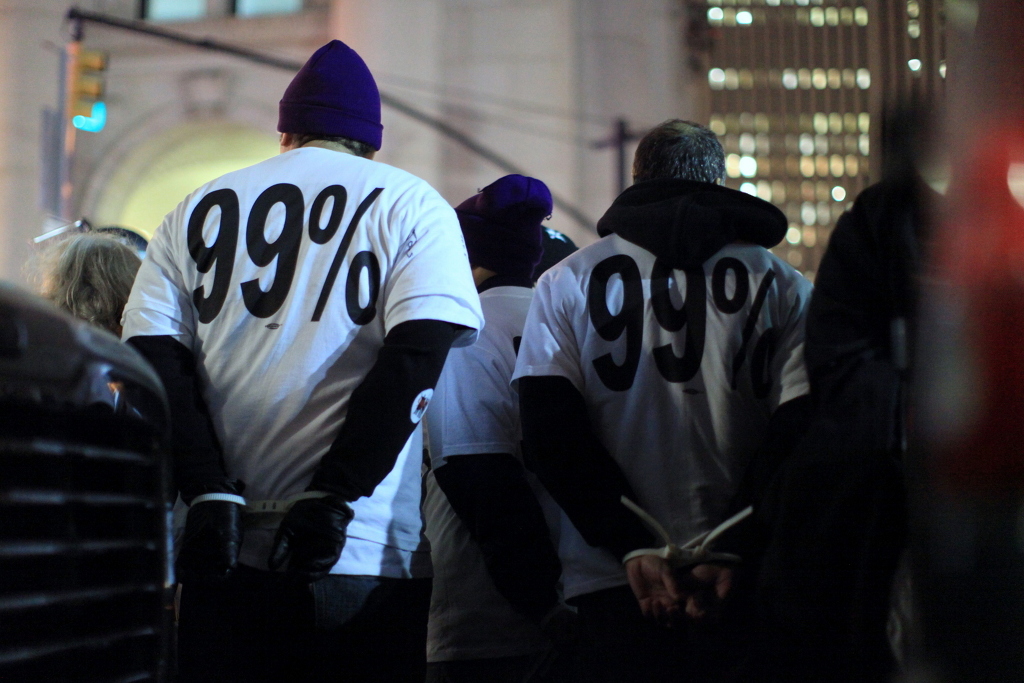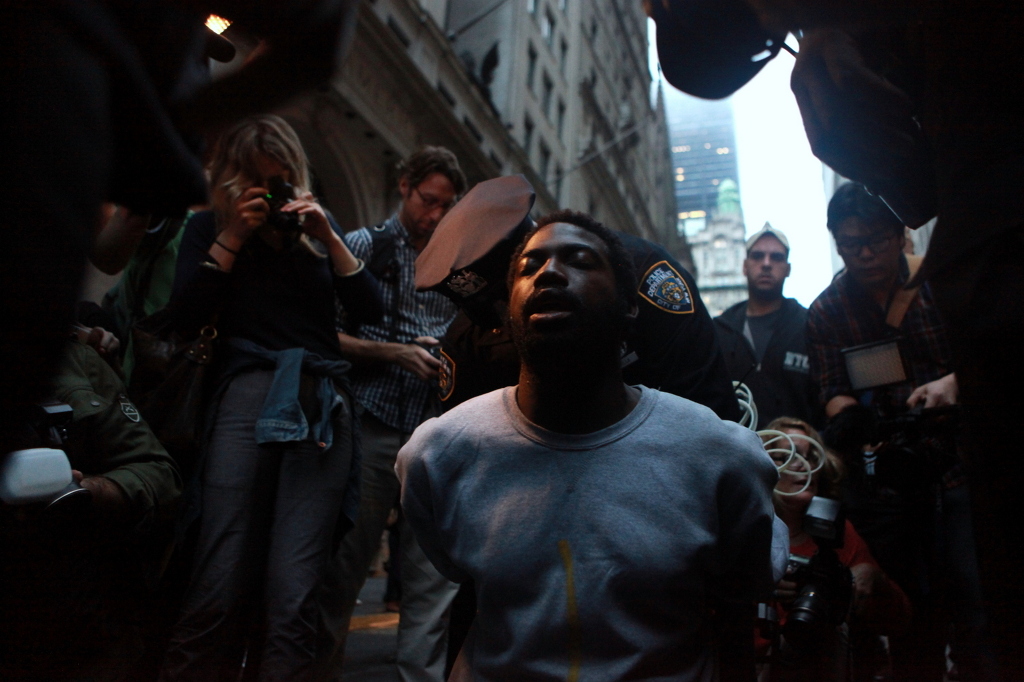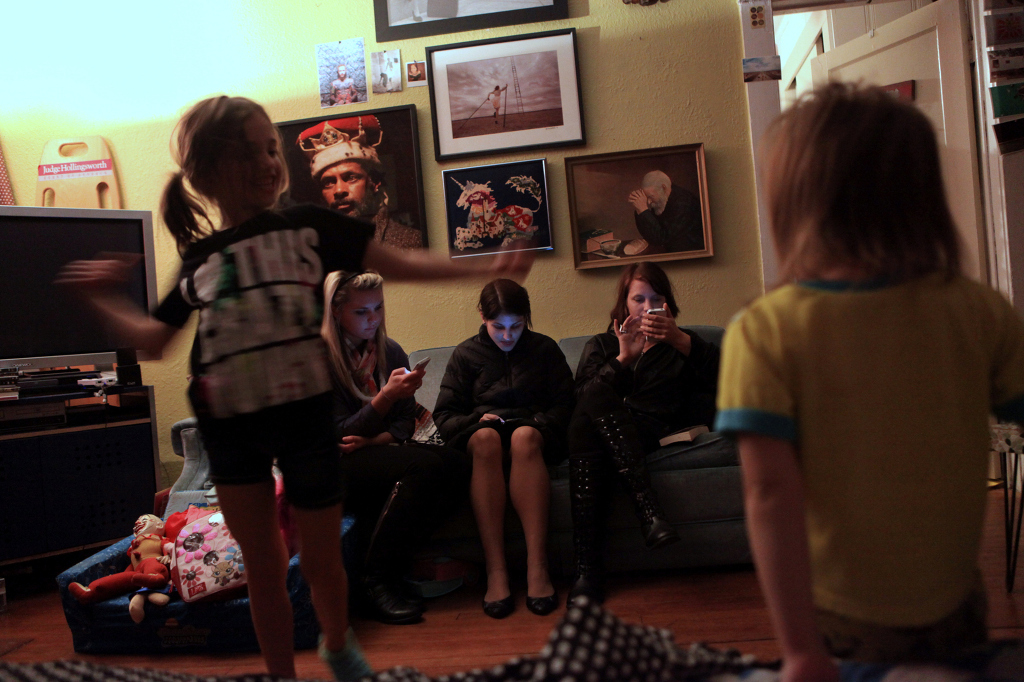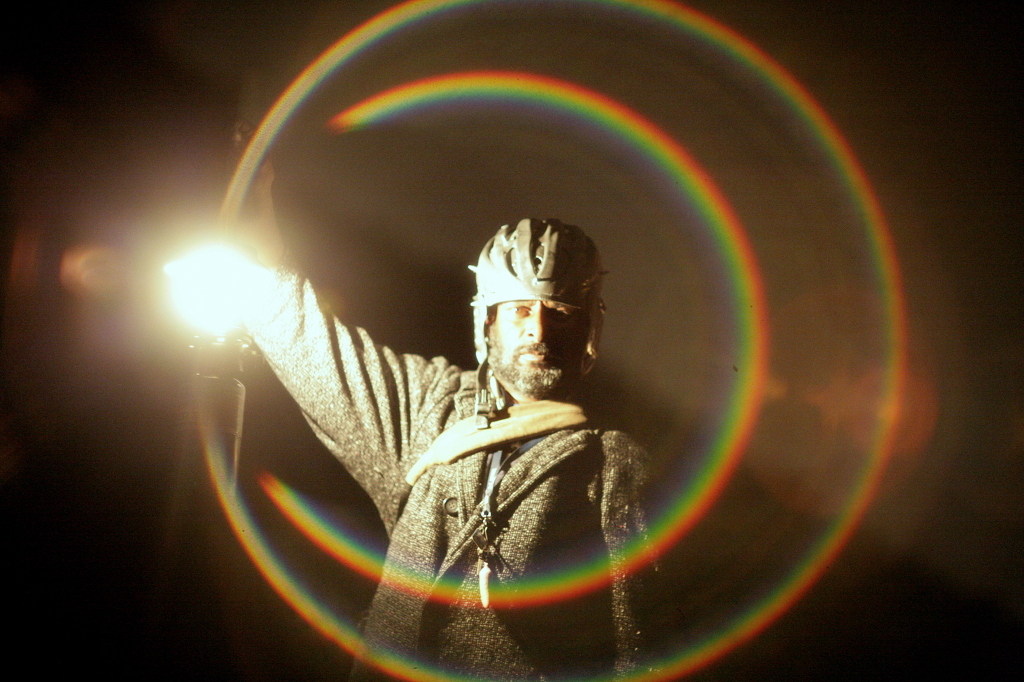
David Foster Wallace proclaimed that the generation of artists who would oppose postmodernism would perhaps be “some weird bunch of ‘anti-rebels’, born oglers who dare to back away from ironic watching, who have the childish gall actually to endorse single-entendre values” (Wallace 192). These artists would address “old untrendy human troubles and emotions in U.S. life with reverence and conviction,” who would have to be “[t]oo sincere. Clearly repressed. Backward, quaint, naïve, anachronistic,” who for all their naivety “risk disapproval” and dare to “risk the yawn, the rolled eyes, the cool smile, the nudged ribs, the parody of gifted ironists, the ‘How banal’” (Wallace, 192-93).
One such anti-rebel is the photographer Dylan Hollingsworth.
Hollingsworth’s work includes conceptual photographs of surreal landscapes and raw footage of average individuals from N.Y.C. to Nicaragua. He couples photography with narratives that range from poems or philosophical contemplations to audio-recordings from his subjects – testimony is presented by Holocaust survivors, prostitutes, and American farmers. His photography always focuses on “people, stories and events that have universal meaning and the potential to remind us of the broader life we often miss while lost in our own immediate journeys” (Hollingsworth). He shares his photography and stories through Cowbird, an online community of storytellers whose goal is to “find connections between your life and the lives of others, forming a vast, interconnected ecosystem, in which we all take part” (Cowbird). He recently confessed that, “[m]ore than aesthetic or technique, I watch for emotion and depth…those will always take precedent over creating a perfectly exposed and framed photograph” (Dallas Observer). Indeed, if anything, Hollingsworth presents himself as one of those anti-rebels whose time has come. It is in light of his departure from postmodern gimmicks – kitsch, play, or pastiche – and his reinvestment in sentimentality, sincere and interpersonal connections among artist, art, and audience, that I interviewed Hollingsworth.


Telling Stories
Q: What influenced you to begin to use your photography as a means of telling the stories of other people?
A: I think I’ve always had a story-telling gene within me. None of us really know what we’re doing here. We’re trying our best, we’re trying to meet our needs, we’re trying to find a life that makes sense, and a lot of times our efforts to do that cause more confusion. I started to, instead of seeing differences, see the parallels between us. When I picked up the camera, I realized there’s so many ideas out there, there’s so much nobility out there, there’s so much suffering out there, that everyone lives in a bubble and doesn’t want to look at it [the suffering]. I want to say, “Hey, there’s other stuff going on. There’s people that need help. There’s people that are overcoming problems that you’re struggling with right now, and you’re not alone.” I started to realize that this is a tool that can promote consciousness and can tear down the walls between us.
Q: Do you find that when people tell you their life-stories that it liberates them from their own story that by telling their story in their own terms that they have a sense of power over what has happened to them?
A: I think it all comes down to the individual, but I do think that there’s some healing that comes from someone telling their story in their words because we all really want to be understood. We want to feel like someone has seen our side of things and has had an empathy or compassion for what our experience has been.
Q: There is a passage in J.S. Foer’s Extremely Loud and Incredibly Close, “Everyone could know what everyone else felt, and we could be more careful with each other” (2005, 163). Is this something you want your audience to come away with?
A: [Yes], to feel more connected. To put forth ideas of service. To put forth something about the joy of being alive, and that there’s a utility in suffering.
Q: In your description of your photography you wrote that you want to focus on “stories and events that have a universal meaning.” How do you define universal?
A: Universal means that it’s something that everyone everyone could see and have a moment of connection or identify with – doesn’t mean they will but they could if they thought about it. There are some things that every one of us [needs], physical worldly things – Maslow’s hierarchy of needs type stuff. Bigger than the worldly stuff is this kind of internal thing – the human condition – so every one of us is suffering from it, is trying to make our way through it, is trying to overcome it. And that’s the universal thing; that is: making our way through life, trying to find some meaning, wrestling with the human condition. There’s no one that’s not doing that.


Hopes
Q: At present, what some are defining as the metamodern condition seems to focus on artists’ endeavors to bridge, and move beyond, modern and postmodern preoccupations. Some artists are for instance reinvesting in the notion of the universal or are moving away from irony. Do you see your art as exploring both universal and individual stories/concerns? Both global and local issues?
A: One of my favorite lines from a movie is, “the specifics hardly matter; everyone is everyone” (from Synecdoche, New York–2008), and I think that. Everyone is everyone, and I know that sounds really kind of Eastern and mystical and new-agey – “we’re all one” and stuff – but nobody’s going to remember all these details and stuff later. We were here and one day we’ll be gone, and we did some things and the things that propelled us were usually love and fear. Love: we did some good things. Fear: we destroyed some things. I sum it up like that, saying, the specifics don’t matter so much. In the same breath I do appreciate the detail. I do like the individual stories, but I like them because I think everyone can find a mirror within it, they can find something. The hope that I mentioned a few times [is] that the individual story will have the ability to spark a connection in anyone if they want. I do think some of the local and individual stories are symptomatic of where we are globally, and these global times are different. But again, I think the details of our time doesn’t matter; the source of those defining issues are always going to be the same.
Q: Do you think your art speaks to the individual’s sensibilities or to a specific cultural sensibility?
A: It targets the individual because what’s culturally popular is whatever is amusing us the most and whatever most people are saying, and we’re distracted by a whole lot of stuff. When we talk about culture we talk about a group of people who, especially as Westerners, are very flighty and it’s always changing. I want to be able to put forth stuff that may not be popular with what is “in” or “relevant” on the grander scheme in their minds, but the individual – when you isolate them – is always going to trigger something in them. The truth is if you are talking about things with universal meaning, which is just everyday human stuff, it’s always going to be relevant. I think there are probably nations, cultures, or subcultures that are more attuned to this kind of stuff we’re talking about – but it’s what I’ve tried to do – and I have found that when you strip it all away and you can kind of guide someone into looking past a person’s exterior that they do see and they’re like, “That did touch my heart.” I’ve found that, regardless of people’s social or economic class they are coming from, that when they see something that is about humanity they will feel that, and it’s such a good thing.
Q: David Foster Wallace said, “In dark times, the definition of good art would seem to be art that locates and applies CPR to those elements of what’s human and magical that still live and glow despite the times’ darkness….it’d find a way both to depict this dark world and to illuminate the possibilities for being alive and human in it” (McCaffery, 1993, 131). Do you find that your photography and journalism does both?
A: That is my hope. My hope and my belief about myself, and because I believe it about myself, I have to believe it for everyone else. The main belief is that life is good even though it’s difficult; we’re beautiful even though we are flawed; that it’s worth getting up in the morning even though things aren’t going to turn out the way we want them to; that in spite of our suffering, life is a pretty sweet deal. That’s what I believe; I hope that it comes through in my work, and I hope that by showing the darkness that people are more propelled to discover the light. That by showing the struggle to people that they are more propelled to want to overcome it. I think you need both.

Affect
Q: Tanja Wagner, a gallerist in Berlin, observed that: “I am seeing a lot of new tendencies and sensibilities in terms of artists really wanting to have a dialogue again…they want to engage again, but not in a dry conceptual way. These artists want affect again, they want to talk about love, which I thought was almost not possible” (Forbes, 2012). Do you find that your art instigates sentimentality?
A: A hundred percent! It’s what I do. That is why I do what I do because I think that we are all on this journey and wrestling with some stuff and I want to talk about this internal conflict; I want to talk about the joy that comes when we overcome it. I want to put forth those ideas to people because that’s just the world I know. It was darkness, and I fought and was kind of delivered in the same sense, and now it’s light. But I know both of them. Let’s know what we’re up against and let’s know that we can get through it, and I want to show both of those things cause those are the two worlds that I’ve known. I do want to trigger that in people because it promotes change and it promotes thought.
Q: As an artist, if you could choose one emotion that all of your viewers would experience from your work, what would that emotion be?
A: Elation. Gratitude. Compassion. Elation: the idea of putting something in front of people that’s saying, “Damn it! I’m alive! Wow, look at this thing we’re apart of; it’s so confusing and yet it’s kind of really good.” Gratitude. I have this moment where I see that all my needs are met. I have valuables. I’ve got human relationships. I have purpose. I kind of know why I’m getting up in the morning; I get to touch some people’s lives. That’s enough. Compassion: the feeling of caring about other people, being affected by other people, appreciating other people.
REFERENCES
– Cowbird.com/about
– Dylanhollingsworth.com/about
– Foer, Jonathan Safran (2005): Extremely Loud and Incredibly Close, New York: Houghton, 2005, p. 163.
– Forbes, Alexander (2012): “the metamodern mindset,” Berlin Art Journal.com
– Hungerford, Amy (2010): Postmodern Belief. American Literature and Religion since 1960. Princeton: Princeton UP. Print.
– McCaffery, Larry (1993): “An Interview with David Foster Wallace,” Review of Contemporary Fiction: Vol. 13: Iss. 2 (1993): 127-50.
– Mixmaster (2013) “Dallas Observer Masterminds 2013: Meet the Winners of Our Annual Art Awards,” Dallas Observer.com
– Wallace, David Foster (1993) “E Unibus Pluram: Television and U.S. Fiction,” Review of Contemporary Fiction : Vol. 13: Iss. 2, 151-194.
Images (from top): ‘Of Human Bondage’ from the series ‘Ascending’;
Two images from the series ‘Occupy Wall Street’;
‘The Wilsons Dallas, Tx.’ and ‘Words With Friends Dallas, Tx.’
‘Tachowa’ – photo essay on the man who turned a junk tank into a junk palace (see: dylanhollingsworth.com/tachowa).
All images copyright Dylan Hollingsworth

what a wonderfully uplifting interview